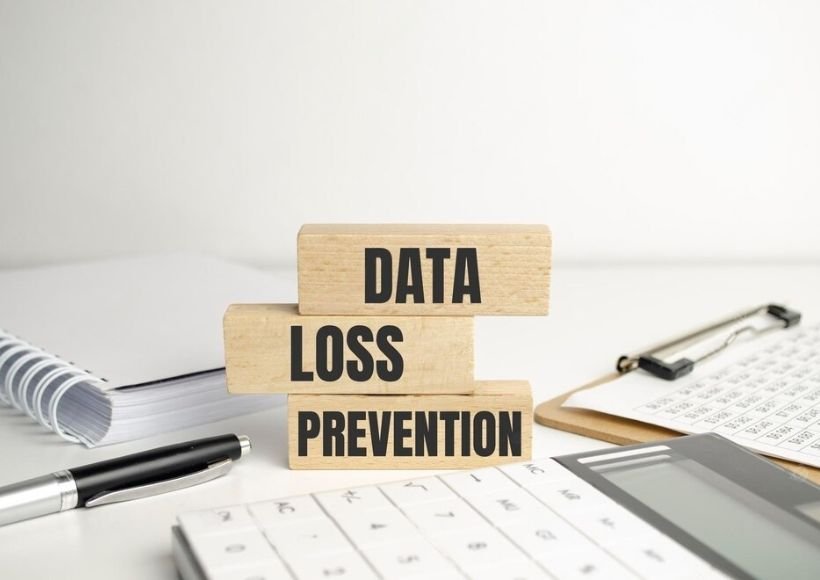Data Loss Prevention: Everything You Need To Know

Data breaches. The words alone are enough to strike fear into the heart of even the most hardened business leaders. A combination of significant financial damages, reputational impacts, and potential legal troubles makes data breaches one of the severe threats to modern organizations. Fortunately, there are technologies available to identify and prevent data breaches, namely, data loss prevention (DLP) solutions.
For organizations considering implementing DLP into their security stack, here’s everything you need to know.
Table of Contents
What is Data Loss Prevention?
Data Loss Prevention (DLP) is a comprehensive approach to safeguarding sensitive data from unauthorized access, leakage, or loss. It involves implementing strategies, technologies, and processes to prevent data breaches and protect valuable information assets. DLP solutions typically consist of various components, such as data discovery, classification, monitoring, policy enforcement, and incident response. These components work together to identify and protect sensitive data, control access and sharing, and detect and mitigate potential risks. By employing content inspection, endpoint protection, network monitoring, and encryption techniques, DLP helps organizations ensure compliance with regulations, prevent data leaks, and safeguard intellectual property. DLP is crucial to maintaining data confidentiality, integrity, and availability, mitigating financial losses, reputational damage, and enhancing customer trust.
Data Loss Prevention Goals
Data loss prevention solutions aim to:
- Prevent unauthorized access to sensitive data.
- Prevent accidental or intentional data leaks or breaches.
- Safeguard sensitive information from being transferred to unauthorized recipients.
- Protect data from insider threats or employee misconduct.
- Ensure compliance with industry regulations and data protection laws.
Types Of Data Protected by DLP
Organizations can apply DLP to various kinds of data, including:
- Personally Identifiable Information (PII) such as social security numbers, addresses, and financial data.
- Intellectual Property (IP) like trade secrets, proprietary algorithms, or product designs.
- Payment Card Information (PCI), including credit card numbers and CVV codes.
- Protected Health Information (PHI) such as medical records and patient information.
DLP Components
To effectively identify and prevent data breaches, DLP solutions must include the following five essential components:
- Data discovery refers to identifying the location and classification of sensitive data within an organization’s network.
- Data classification is labelling or tagging data based on its sensitivity and value.
- Data monitoring involves tracking and analyzing data usage patterns and user behavior to detect potential risks.
- Policy enforcement is the application of rules and policies to control data access, sharing, and storage.
- Incident response involves responding to and mitigating data breaches or policy violations.
How DLP Works
DLP solutions employ various techniques to protect data, including:
- Content Inspection – Analyzing data content for sensitive information using keyword matching, regular expressions, or data fingerprinting.
- Endpoint Protection – Securing data on individual devices such as laptops, mobile phones, and USB drives.
- Behavior Monitoring – Monitoring activities to identify any abnormal or suspicious behavior.
- Network Monitoring – Monitoring network traffic for data transfers, applying filters, and blocking unauthorized activities.
- Encryption and Tokenization – Protect data by encrypting or replacing it with non-sensitive tokens.
- User Education and Awareness – Training employees on data security best practices and raising awareness about potential risks.
Challenges Of DLP Implementation
While worthwhile, implementing DLP comes with several challenges. It’s difficult, for example, to strike a balance between data protection measures and employee productivity. It may be tempting when implementing DLP to apply restrictions to anything and everything, but this can seriously hinder employee productivity. Organizations should only use the most stringent access controls to the most sensitive networks or systems to ensure security doesn’t impede normal business functions.
Security teams may need help managing and monitoring data across multiple systems, networks, and endpoints. To ensure security teams aren’t overworked, it’s vital to seek out DLP solutions that utilize automation technologies to manage and monitor data.
Similarly, some DLP solutions will pepper security teams with false positives and negatives. As such, organizations must seek DLP solutions that take context into account. For example, without the necessary context, DLP solutions will flag all exfiltration attempts, even if the data a user is exfiltrating is not sensitive or sensitive. This alert would prompt the security team to launch an unnecessary investigation, wasting valuable time and resources.
Regulatory Compliance And DLP
DLP plays a crucial role in helping organizations comply with data protection regulations, such as the General Data Protection Regulation (GDPR), the Health Insurance Portability and Accountability Act (HIPAA), and the Payment Card Industry Data Security Standard (PCI DSS). Organizations can demonstrate their commitment to safeguarding sensitive data and avoiding regulatory penalties by implementing DLP controls.
Data Loss Prevention is essential to modern cybersecurity, helping organizations maintain the confidentiality, integrity, and availability of sensitive data. By understanding DLP concepts and implementing appropriate measures, businesses can mitigate risks and protect their most valuable information assets.
Also Read : How To Secure Your Company Data And Applications In The Cloud




